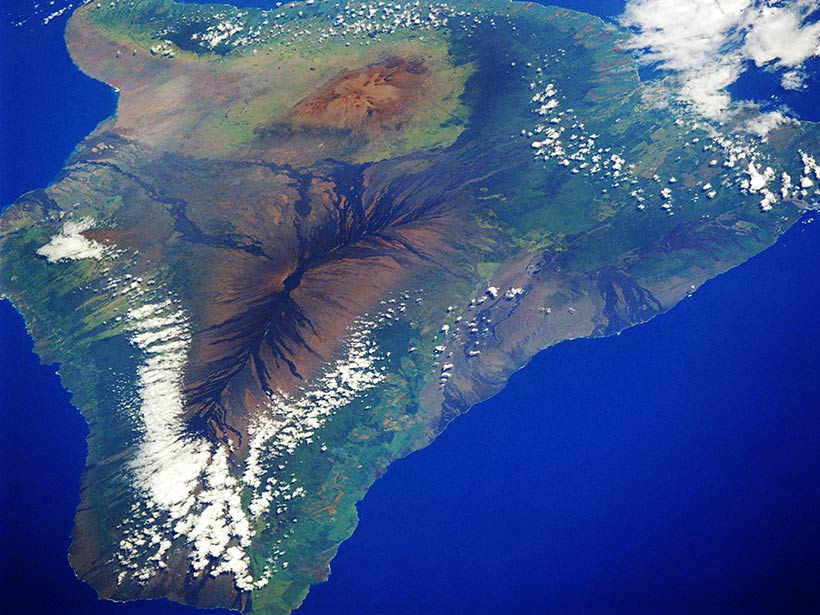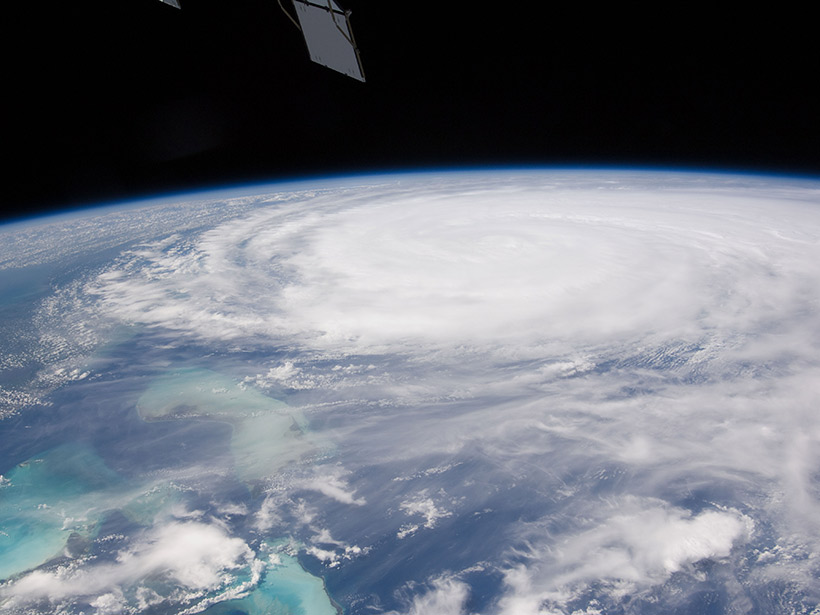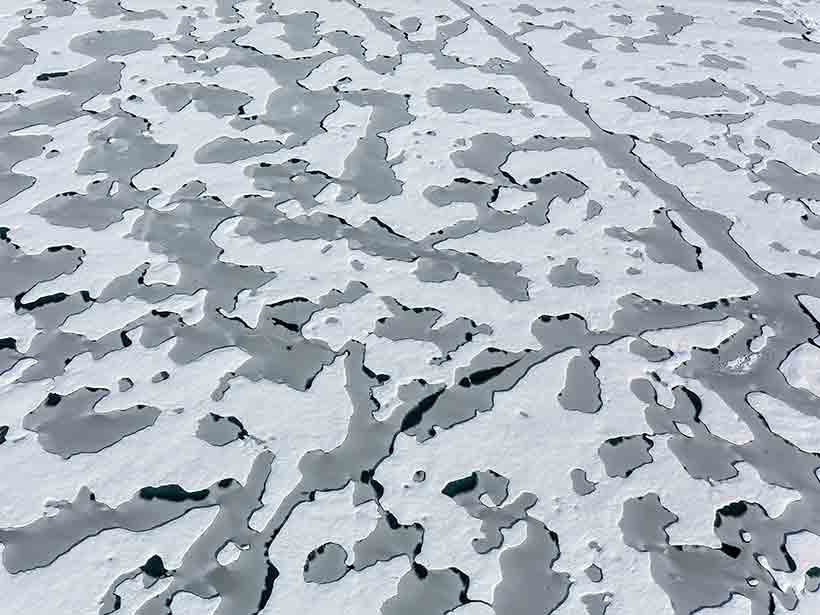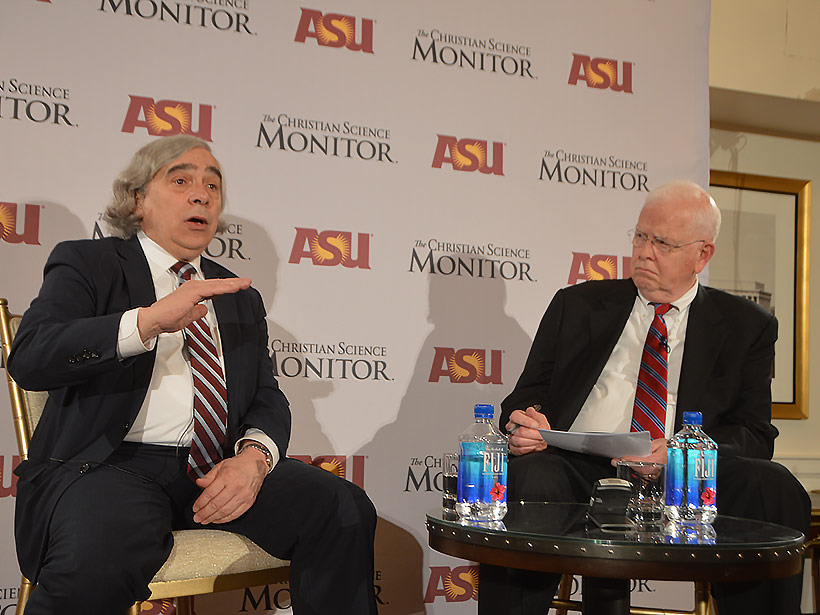NASA Magnetospheric Multiscale (MMS) mission detects energy differences in electrons scattered by magnetic reconnection.
CC BY-NC-ND 2016
A Hole in Earth’s Surface
Research shows that a broken lithosphere underneath the island of Hawai'i could explain the island's patterns of seismic activity.
Crowdsourced Seismology
The seismologists of the world want to turn you into an earthquake detector.
What Causes Long-Term North Atlantic Surface Temperature Cycles?
New evidence strengthens a likely link between 20- to 40-year sea surface temperature fluctuations and varying ocean circulation patterns.
Ionospheric Waves Linked to Polar Atmospheric Dynamics
Ionospheric waves are likely to be caused by processes in the polar atmosphere rather than by space weather.
Arctic Sea Ice Extent May Shrink Below 2012 Record Low
Satellite data, field measurements, and readings from "snow buoys" reveal ice thickness patterns similar to those preceding the lowest recorded sea ice extent, which was reached nearly 4 years ago.
What Makes Long-Runout Landslides So Mobile?
New research shows that acoustic waves rippling through some large landslides can reduce friction and allow slides to run out long distances.
U.S. Energy Secretary Says Paris Accord Cuts Are Not Enough
Moniz foresees progress on climate change in the United States no matter who wins the U.S. presidential election.
New Climate Studies: Worse Risks at 2°C Rise, Higher Rise Likely
Although the Paris agreement scheduled to be signed 22 April aims for a 2°C warming cap, new findings show that even a 1.5°C rise will hit glaciers hard.
Gypsum Forms in an Unexpected Way
Scientists spot the "stem cell" building blocks that lay the foundation for gypsum's formation.








